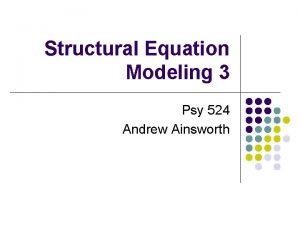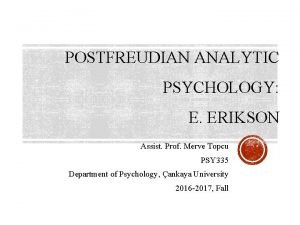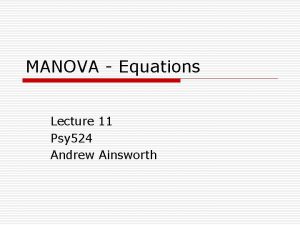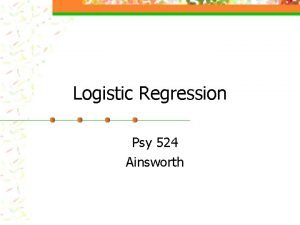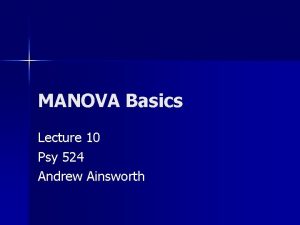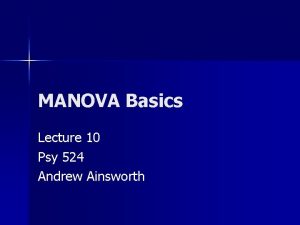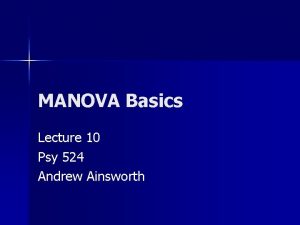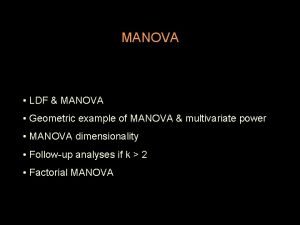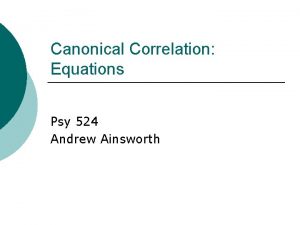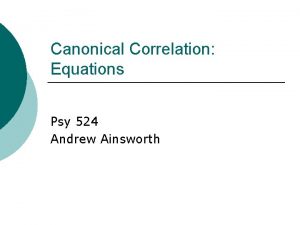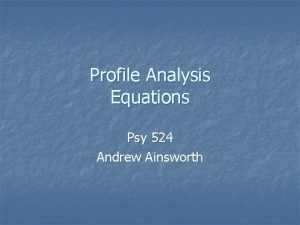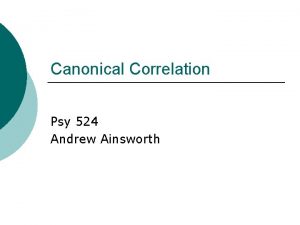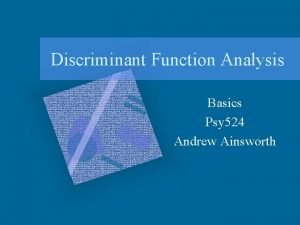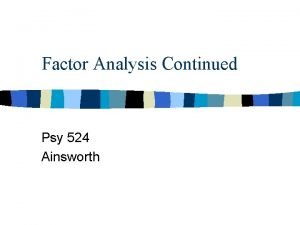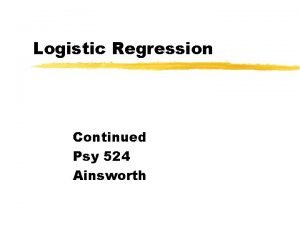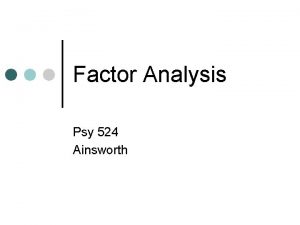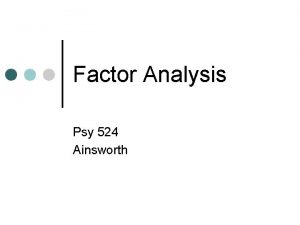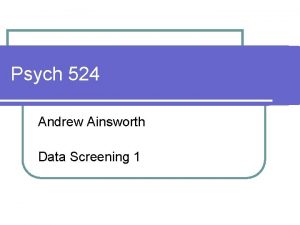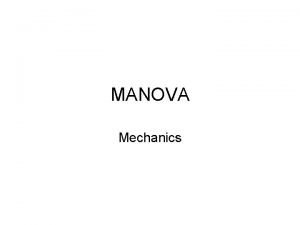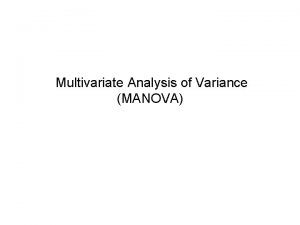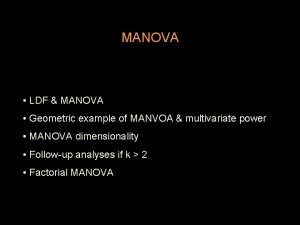MANOVA Equations Lecture 11 Psy 524 Andrew Ainsworth























- Slides: 23

MANOVA - Equations Lecture 11 Psy 524 Andrew Ainsworth

Data design for MANOVA

Data design for MANOVA

Steps to MANOVA is a multivariate generalization of ANOVA, so there analogous parts to the simpler ANOVA equations

Steps to MANOVA o ANOVA –

Steps to MANOVA o When you have more than one IV the interaction looks something like this:

Steps to MANOVA o The full factorial design is:

Steps to MANOVA - You need to think in terms of matrices o n n n Each subject now has multiple scores, there is a matrix of responses in each cell Matrices of difference scores are calculated and the matrix squared When the squared differences are summed you get a sum-of-squares-and-cross-products-matrix (S) which is the matrix counterpart to the sums of squares. The determinants of the various S matrices are found and ratios between them are used to test hypotheses about the effects of the IVs on linear combination(s) of the DVs In MANCOVA the S matrices are adjusted for by one or more covariates

Matrix Equations o If you take three subjects in the treatment/mild disability cell:

Matrix Equations o You can get the means for disability by averaging over subjects and treatments

Matrix Equations o Means for treatment by averaging over subjects and disabilities

Matrix Equations o The grand mean is found by averaging over subjects, disabilities and treatments.

Matrix Equations o Differences are found by subtracting the matrices, for the first child in the mild/treatment group:

Matrix Equations o Instead of squaring the matrices you simply multiply the matrix by its transpose, for the first child in the mild/treatment group:

Matrix Equations o This is done on the whole data set at the same time, reorganaizing the data to get the appropriate S matrices. The full break of sums of squares is:

Matrix Equations o If you go through this for every combination in the data you will get four S matrices (not including the S total matrix):

Test Statistic – Wilk’s Lambda o o o Once the S matrices are found the diagonals represent the sums of squares and the off diagonals are the cross products The determinant of each matrix represents the generalized variance for that matrix Using the determinants we can test for significance, there are many ways to this and one of the most is Wilk’s Lambda

Test Statistic – Wilk’s Lambda o this can be seen as the percent of non -overlap between the effect and the DVs.

Test Statistic – Wilk’s Lambda o For the interaction this would be:

Test Statistic – Wilk’s Lambda o Approximate Multivariate F for Wilk’s Lambda is

Test Statistic – Wilk’s Lambda o So in the example for the interaction:

Eta Squared

Partial Eta Squared
 Dr. andrew ainsworth
Dr. andrew ainsworth 01:640:244 lecture notes - lecture 15: plat, idah, farad
01:640:244 lecture notes - lecture 15: plat, idah, farad Psy
Psy Ucf industrial organizational psychology
Ucf industrial organizational psychology Psy
Psy Psy academy
Psy academy Suppose twin teenagers are vying
Suppose twin teenagers are vying Psy
Psy Na papieri gramatika
Na papieri gramatika Psy
Psy Psy 335 purdue
Psy 335 purdue Psy2055
Psy2055 Psy ku
Psy ku Daniel sanin
Daniel sanin 11 psy
11 psy Psy
Psy Psy 2055
Psy 2055 Psy walsh
Psy walsh Psy
Psy Euro psy
Euro psy Regression psy
Regression psy Psy 226
Psy 226 Xxxxblue
Xxxxblue Polovnicke psy
Polovnicke psy
